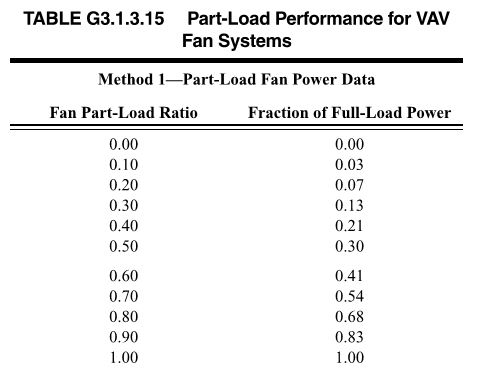Performance Curves for OpenStudio
I would like to know what other's have done for performance curves in OpenStudio. Does someone have a comprehensive library for performance curves for equipment? I have found this document online (Appendix 5.7 Performance Curves), and it looks helpful but I'm not sure how to make sense of it (when I use the performance curves from this spreadsheet I get errors when I run my model). If you don't have a comprehensive list of performance curves, anything would be helpful especially curves for variable speed pumps and fans. Thanks!







Do you want to create performance curves from measured data you have collected?
The EnergyPlus Input/Output reference provides great help, I think (http://bigladdersoftware.com/epx/docs...). This gives you a general idea of how these performance curves are defined. Then you can go into, for example, the EIR chiller section (http://bigladdersoftware.com/epx/docs...) and see which temperature corresponds to x or y.
You can do the same with variable volume fans (http://bigladdersoftware.com/epx/docs...) and variable speed pumps (http://bigladdersoftware.com/epx/docs...), for example. However, like you, I have no seen a comprehensive library yet and need to "roll my own" every time.
The only thing I know of that comes close is the libraries available under the EnergyPlus DataSets directory. But these are IDF files, not OSM file, so you would have to manually copy/paste the coefficients, or write a measure somehow. Unfortunately, measures are much beyond my capability.
Hi. Since this question is 9 years old I woul like to know if there is an update of how to do it?